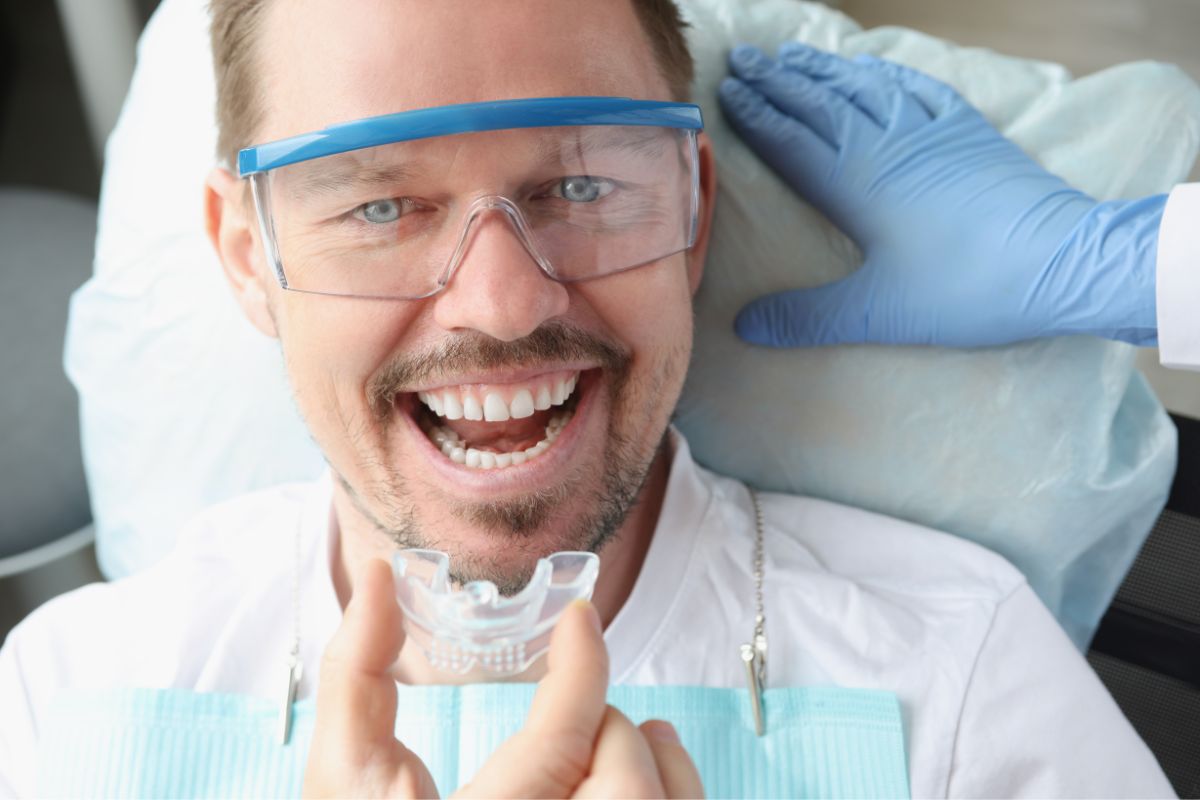The Importance of Orthodontic Treatment for Children

As parents, knowing the importance of orthodontic treatment and consultation can make a real difference in our child's dental health.
It's like having that secret weapon up our sleeves! On the flip side, if we don't have this knowledge, we may miss out on seeking orthodontic care for our little ones at the right time.
And trust us; timing is everything regarding our children's oral health, especially when discussing early orthodontic issues.
Like what others say: An ounce of prevention is worth a pound of cure!
The reason is simple. Not only your kid's current and future oral health is at stake. But also, their confidence, social life, and self-image.
So, if you're concerned about your child's oral health and overall well-being, you have this article to help you nip the bud and pave your kid's way to a healthy and beautiful smile.
We'll explore the essence of orthodontic treatment and how it can benefit your child in the long run.
Understanding Orthodontic Treatments for Children
Orthodontic treatments for children involve interventions addressing orthodontic issues during their developmental years.
While not every child needs early orthodontic treatment, tackling orthodontic issues head-on is still crucial. By doing so, parents can minimize the severity of potential orthodontic problems and reduce the need for more extensive orthodontic intervention in the future.
For instance, a study published in the Dental Press Journal of Orthodontics revealed that early treatment could shorten the overall treatment duration or even prevent the need for them altogether as your child enters puberty.
But when is the best time to take your kid for orthodontic treatment?
The American Association of Orthodontists recommends that kids have their first visit to the dentist or an orthodontic specialist as soon as an orthodontic issue is identified, and ideally before the age of 7.
Benefits of Early Orthodontic Intervention
Early intervention in orthodontic treatment offers several benefits that can significantly impact your child's overall dental health and future life.
For example, seeking early treatment can help optimize permanent teeth development, guide jaw growth, and create space for emerging teeth. This helps prevent dental problems such as spacing, overcrowding, and misaligned bites.
Other advantages include:
Emotional satisfaction
By addressing orthodontic issues early on, your child can enjoy improved self-esteem and confidence as their smile transforms and aligns at a younger age.
A study on the psychological impact of orthodontic treatment on quality of life suggested that undergoing orthodontic treatment can lead to positive psychological changes across various aspects of life and improve the overall quality of oral health.
Notably, significant improvements can be seen in both the functional and aesthetic aspects of oral health after receiving orthodontic treatment for different classes of malocclusion.
The implications of the study's findings for early orthodontic treatment in children are significant. Since severe malocclusion can have a substantial negative impact on a person's quality of life, addressing orthodontic issues early on becomes even more crucial.
Growth potential
During the early stages of development, a child's jaw and facial structure are still growing. Taking advantage of this growth potential through early intervention can optimize the alignment of their teeth and enhance their overall facial harmony.
Facial harmony, also known as facial balance or aesthetic harmony, refers to the concept of proportion and balance in the various features of the face.
Also, as part of an early orthodontic intervention, orthodontists closely examine the alignment and eruption patterns of the teeth, jaw growth, and overall craniofacial development.
Consider a study aimed at developing a 3D morphable model of the normal pediatric mandible to analyze shape development and growth patterns for males and females.
The study suggests that understanding how the shape of the lower jaw changes during growth can help improve the accuracy of diagnosing craniofacial conditions (e.g., craniofacial microsomia or sometimes Goldenhar syndrome) that affect its structure.
By having insights into the changes in mandibular morphology, healthcare professionals can enhance their diagnostic capabilities, treatment planning, and overall patient management for craniofacial conditions.
Improved patient-dentist collaboration
Younger children are often more willing to cooperate and actively participate in their orthodontic treatment. This can make the process smoother and more successful, as they are more likely to follow instructions and maintain good oral hygiene practices.
Similarly, by improving dentist-patient collaboration, it may be possible to minimize the complexity of any future orthodontic treatment that may be needed. This can result in a more streamlined and simplified second phase, potentially reducing the duration and intensity of treatment.

Orthodontic Treatment Approaches for Kids
Orthodontic treatment for children involves various approaches and techniques, which are categorized into two main types: interceptive and two-phase orthodontics.
Interceptive orthodontics (early orthodontic treatment), which involves using growth modification appliances, addresses emerging issues earlier rather than waiting until later. Typically, interceptive orthodontics begins around the age of eight or nine.
Patients usually avoid the need for more extensive treatments as they grow older. Furthermore, specific procedures orthodontists can reliably and efficiently carry out in younger children may only be feasible with older individuals. Nonetheless, 15 to 20% of children can benefit from such a treatment.
Some common treatments under interceptive orthodontics include:
Space maintainers
These devices preserve space for permanent teeth in cases of premature primary (baby) tooth loss. They prevent neighboring teeth from shifting into the gap, avoiding alignment problems.
Palatal expanders
To widen the upper jaw, palatal expanders correct crossbites and create sufficient space for the proper eruption of permanent teeth.
Dental arch expansion
This treatment widens dental arches to rectify crowded teeth, crossbites, and narrow arches. It facilitates appropriate alignment and positioning of the teeth.
Early orthodontic braces
Braces may be employed at a younger age to address specific dental alignment issues, such as crooked or crowded teeth, and guide proper jaw development.
Growth modification appliances (bionators bite blocks)
These appliances guide the growth and development of the jaws to correct skeletal imbalances and enhance overall bite and facial harmony.
Habit-breaking appliances
These dental appliances discourage harmful oral habits, such as thumb sucking or tongue thrusting, thereby aiding in the proper development of teeth and jaws.
Another approach is the two-phase orthodontic treatment, which involves early treatment and further adjustments when the child's adult teeth emerge.
These treatments, including ceramic braces, metal braces, and clear aligners, effectively correct misaligned teeth, guide jaw growth, and create proper alignment.

Emotional Considerations and Support
Undergoing orthodontic treatment can sometimes be emotionally challenging for children and can even cause dental anxiety. Concerns about braces or orthodontic appliances may arise, affecting their confidence and willingness to undergo the procedure.
Therefore, addressing these concerns and providing emotional support is crucial. Open communication, reassuring your child about the positive outcomes of treatment, and explaining the importance of caring for their oral health can help alleviate fears and anxieties.
That said, here are some practical tips to help you manage dental anxiety and improve your child's cooperation during orthodontic treatment:
1. Create a welcoming atmosphere: Seek an orthodontist who creates a friendly and welcoming environment for children. A warm introduction can help ease anxiety and build a positive rapport.
2. Understand the procedures: Request the orthodontist to explain the treatments in simple terms and provide visual aids to help you and your child understand what to expect during each visit.
3. Familiarize yourself with the instruments: Ask the orthodontist to show and explain the devices used beforehand. Let your child touch and explore them to demystify any fears.
4. Personalize the experience: Allow your child to listen to their favorite music or audiobooks during appointments. This can act as a comforting distraction and create a more relaxed setting.
5. Encourage positive reinforcement: Implement a reward system for your child's cooperation and bravery during appointments. Small incentives like stickers or toys can motivate them to participate and overcome anxiety actively.
6. Engage in distractions: Utilize interactive distractions such as video games, virtual reality headsets, or storytelling during more lengthy procedures. These activities divert your child's attention and reduce anxiety.
7. Teach relaxation techniques: Help your child learn simple breathing exercises, like deep breathing or blowing bubbles, to promote relaxation during treatment. Encourage them to focus on their breath to alleviate anxiety.
8. Establish a "stop" signal: Discuss with the dental professional the option of allowing your child to have a non-verbal "stop" signal, like raising their hand, to pause the treatment if they feel overwhelmed. This empowers them and builds trust.
9. Gradual exposure: If your child has severe anxiety, work with the dentist to start with shorter, less invasive procedures and gradually progress to more complex ones. This gradual exposure helps build resilience and reduces fear over time.
10. Maintain open communication: Establish open and honest communication with your child and the orthodontist. Address any concerns or fears your child may have and provide reassurance and support throughout treatment.
Every child is unique, so adapting these strategies to your child's specific needs and preferences is essential.
Building trust, providing clear explanations, and fostering a positive and supportive environment can help alleviate dental anxiety and improve cooperation during your child's orthodontic treatment.
Key Takeaways
By recognizing the significance of orthodontic treatment for your children and taking proactive measures, you can contribute to their positive dental well-being and overall quality of life.
With the support of an experienced orthodontist or pediatric dentist, personalized approaches to address dental anxiety and open communication with both your child and the orthodontist, you can create a positive experience for your child during orthodontic treatment.
Get the Best Orthodontic Treatment for Your Children
Choosing the right orthodontist for your kids is crucial. But with a plethora of options available, finding the best orthodontist can be overwhelming. However, Culver City Dentist United Dental Care is the go-to destination for reliable and exceptional care.
Whether correcting misaligned teeth, addressing bite issues, or guiding dental development, United Dental Care excels in providing comprehensive orthodontic solutions for children.
If you're seeking reliable pediatric dentistry and exceptional orthodontic treatment for your child in Culver City and surrounding areas, such as Marina Del Ray, look no further than Culver City Dentist United Dental Care.
Give your child the gift of a confident and healthy smile by scheduling a consultation with the best orthodontist in Culver City today.






